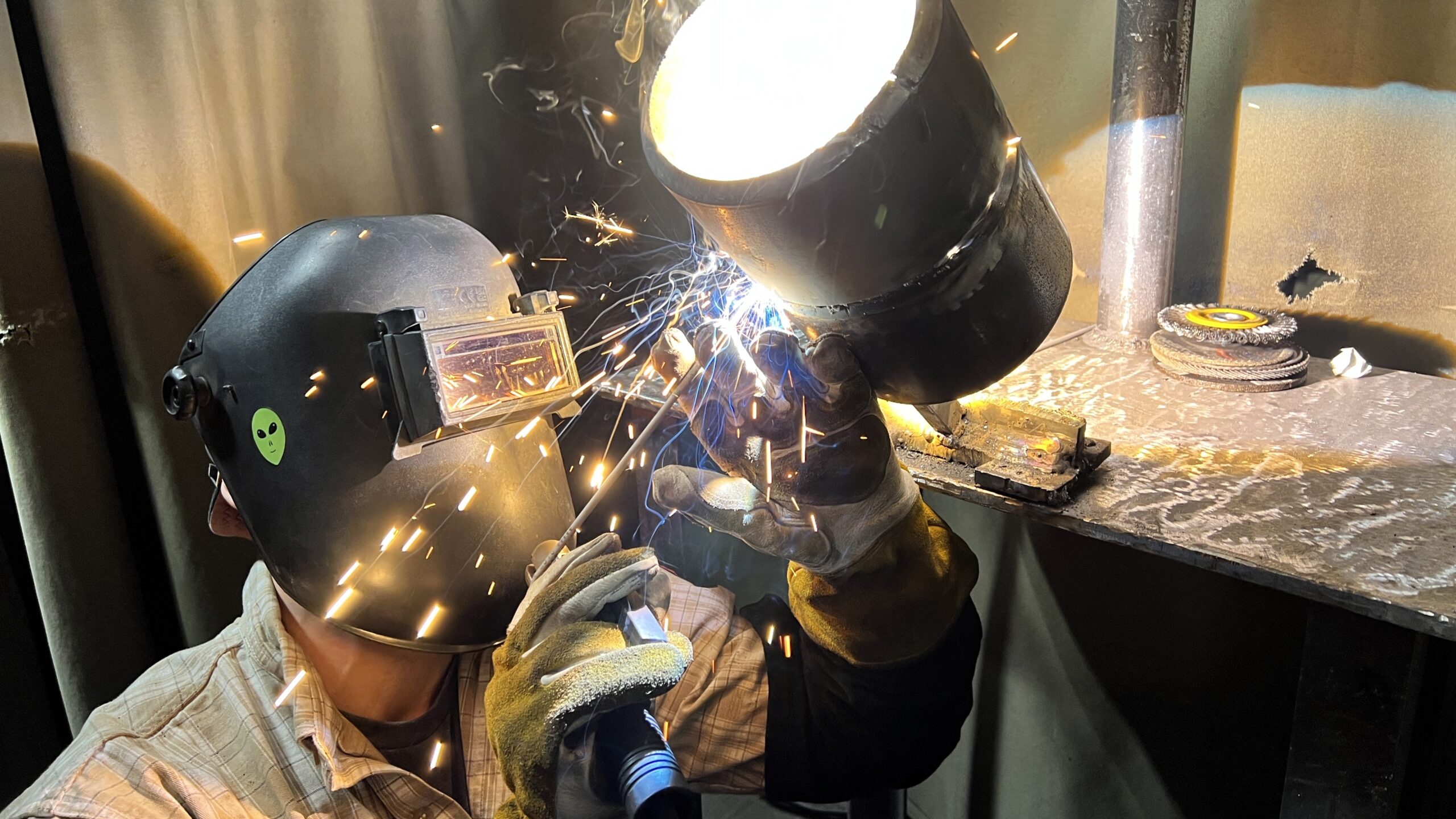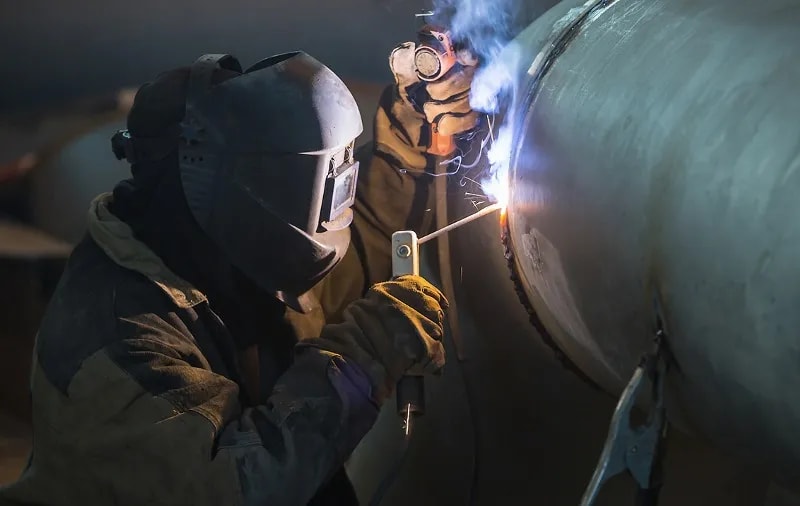All About Welding: Key Insights Into Techniques and Finest Practices for Success
Welding encompasses a range of techniques, each fit for specific products and applications. Recognizing these techniques, such as GMAW, SMAW, and TIG, is essential for accomplishing excellent results. Moreover, the right devices and safety and security techniques can not be forgotten. As prep work and troubleshooting play essential functions in the welding process, mastering these components can significantly improve the quality of the end product. What are the key factors that ensure an effective weld?
Comprehending Different Welding Strategies
Welding methods encompass a variety of approaches, each matched to particular applications and materials. Amongst one of the most typical techniques are Gas Metal Arc Welding (GMAW), Protected Steel Arc Welding (SMAW), and Tungsten Inert Gas Welding (TIG) GMAW, also recognized as MIG welding, is preferred for its speed and adaptability, making it suitable for slim materials. SMAW, or stick welding, is preferred for its simpleness and performance in outside settings, particularly with thicker metals. TIG welding offers accuracy and control, making it ideal for elaborate work and non-ferrous metals (Montana Mobile Welding and Repair Welding). Each strategy has its one-of-a-kind benefits and considerations, enabling welders to choose the most effective approach based upon the job's demands, material kind, and wanted results. Understanding these strategies is crucial for effective welding
Essential Welding Tools and Devices
While different welding strategies need specific abilities, the best equipment and devices are equally crucial for achieving high quality results. Crucial welding devices consists of welding devices, which differ depending upon the technique-- such as MIG, TIG, or stick welding. Protective equipment, including safety helmets, handwear covers, and aprons, assurances security and comfort throughout the procedure. Furthermore, clamps and components help secure products in place, ensuring accuracy in welds. Consumables like welding rods, cable, and securing gas are likewise crucial parts that influence the quality of the weld. Devices such as mills and cutters assist in surface prep work and post-weld completing, adding to a specialist outcome. Buying high-quality devices eventually improves the efficiency and efficiency of welding jobs.
Safety And Security Practices in Welding
Correct safety techniques are important in the welding sector to protect employees from prospective dangers. Welders have to wear ideal individual safety tools (PPE), consisting of headgears with proper shading, gloves, and flame-resistant clothes. Ample ventilation is important to minimize exposure to unsafe fumes and gases created during the welding process. Furthermore, workers must be educated in the correct handling of welding tools to avoid crashes. Fire precaution, such as keeping flammable materials far from the welding area and having fire extinguishers easily available, are necessary. Regular inspections of equipment and work areas can help recognize possible hazards prior to they bring about crashes. By sticking to these security practices, welders can produce a more secure working environment and reduce risks related to their profession.
Preparing Materials for Welding
Preparing products for welding is an essential action that substantially influences the quality and honesty of the end product (Montana Mobile Welding and Repair Belgrade Welding). Correct prep work includes cleansing the surface areas to eliminate pollutants such as dirt, oil, and rust, which can endanger the weld. Strategies such as grinding, sanding, or utilizing solvents are commonly utilized to accomplish a tidy surface area. In addition, making sure that the products mesh well is vital; spaces can result in weak welds. It's likewise important to take into account the positioning and positioning of the parts, as this will impact the simplicity of welding and the last outcome. Lastly, choosing the ideal filler material and making sure compatibility with the base metals is important for attaining solid, durable welds
Tips for Achieving High-Quality Welds
Accomplishing high-grade welds calls for focus to detail and adherence to ideal methods throughout the welding process. Appropriate joint prep work is necessary, guaranteeing surfaces are complimentary and tidy from pollutants. Choosing the appropriate filler product and welding method based upon the base steels is important for suitable bonding. Keeping constant travel rate and angle while welding can advertise and avoid flaws harmony. Additionally, regulating warmth input is essential; extreme warmth can cause warping and weakened joints. Regularly examining the welds throughout the process enables instant modifications if required. Finally, utilizing suitable post-weld therapies, such as cleaning and stress relief, can improve the resilience and honesty of the weld, ultimately making certain a successful outcome.
Fixing Usual Welding Issues
Welding usually offers difficulties that can impact the quality and honesty of the last product. Common problems such as porosity, inconsistent weld beads, and getting too hot can arise, each calling for certain troubleshooting methods. Understanding these issues is essential for welders to enhance their skills and achieve optimal results.
Porosity Troubles Clarified
Porosity can typically be ignored, it stays a vital problem in welding that can jeopardize the integrity of a completed item. Porosity refers to the existence of little gas pockets within the weld bead, which can lead and compromise the joint to premature failure. This trouble normally develops from contaminants, wetness, or improper securing gas coverage during the welding process. To mitigate porosity, welders should confirm that the base products are dry and tidy, use suitable protecting gases, and maintain regular welding criteria. Frequently examining the equipment and atmosphere can also assist identify prospective problems prior to they manifest in the weld. Resolving porosity properly is important for attaining solid, resilient welds that fulfill quality criteria.

Inconsistent Weld Beans
Inconsistent weld grains can greatly influence the top quality and strength of a completed item. Numerous elements add to this problem, including incorrect traveling speed, wrong amperage setups, and inconsistent electrode angles. When the welder relocates too promptly, a bead may show up narrow and do not have infiltration, while moving too gradually can cause extreme buildup. Furthermore, using the incorrect amperage can lead to either undercutting or extreme spatter, both of which concession weld integrity. The welder's method, such as irregular torch motion, can additionally bring about uneven grain look. To mitigate these troubles, welders should concentrate on maintaining steady, controlled movements and making certain appropriate devices setups to accomplish uniformity in their welds. Consistency is essential to attaining strong and reputable welds.
Getting Too Hot and Bending Issues
Excessive warm throughout the welding process can bring about substantial overheating and warping problems, influencing the architectural stability of the workpiece. These problems usually materialize as distortion, which can jeopardize alignment and fit-up, making more setting up testing. Factors adding to overheating include the choice of more info welding criteria, such as voltage and travel speed, along with the kind of product being bonded. To reduce these concerns, welders ought to maintain regular travel rate and appropriate heat input while monitoring the workpiece temperature level. Additionally, preheating or post-weld warmth therapy can aid relieve anxieties caused by quick cooling - Fabrication. Regular inspection and adherence to best techniques are vital in avoiding getting too hot and guaranteeing the durability and integrity of bonded structures
Often Asked Questions
What Are the Profession Opportunities in the Welding Market?
The welding market supplies varied profession chances, including positions as welders, educators, examiners, and engineers. Professionals can work in manufacturing, building and construction, aerospace, and automobile industries, gaining from solid need and competitive wages in numerous roles.
How Can I Enhance My Welding Speed Without Giving Up Top Quality?
To boost welding rate without compromising top quality, one need to exercise effective strategies, keep devices, enhance settings, and enhance hand-eye sychronisation. Regular training and seeking feedback can additionally greatly contribute to achieving faster, top notch welds.
What Certifications Are Offered for Welders?
Numerous accreditations exist for welders, including those from the American Welding Society (AWS), the National Center for Construction Education And Learning and Research (NCCER), and different industry-specific organizations. These credentials boost employability and demonstrate skill proficiency.
How Does Welding Impact the Features of Metals?
Welding influences the residential properties of steels by altering their microstructure, which can bring about adjustments in solidity, strength, and ductility. Heat input and cooling rates throughout the procedure considerably affect these material characteristics.
Can I Weld Dissimilar Metals Together?
